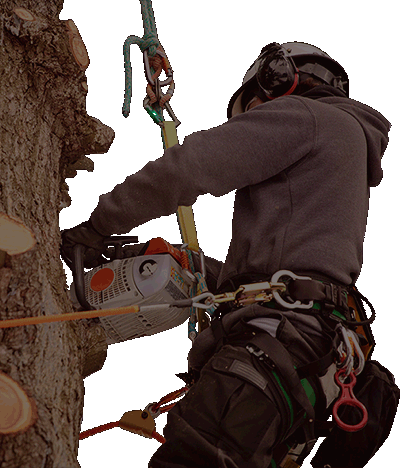
We often call fertilizer “food for our lawns” because it’s stocked with nutrients that keep turf healthy, green and growing. And
But like with anything, too much of a good thing is a bad thing! Did you recently fertilize and now spot yellow grass, brown spots or streaking?
If that sounds familiar, you may have over fertilized your lawn, which is called fertilizer burn. Look for these symptoms, then learn how to repair your suffering turf.
Over Fertilized Lawn… Now What? (Fertilizer Burn Symptoms and Repair)
Look for these symptoms of fertilizer burn in the yard.
The best fertilizers have a blend of nitrogen (N), phosphorus (P), and potassium (K), which all help lawns look their best. Some fertilizers also contain soluble salts, which is where most of the risk comes in.
When you apply too much fertilizer or spill some by accident, the salt buildup can cause fertilizer burn. So, you’ll see brown, yellow or streaked grass. This happens more often with quick-release fertilizers, which flood lawns with nutrients all at once.
Will over fertilized grass grow back?
Healthy grass can bounce back with the right care. You’ll want to make sure the grass is still alive before attempting to revive it. Usually, yellow and brown streaks can recover. But crunchy, brown grass could mean you need to consider replanting.
It’s really tough to tell whether your grass is dead or dormant in summer because they look virtually identical. Your best bet is to check if a few green shoots sprout up after late summer storms. Or if you’re still unsure, ask your local arborist to inspect your lawn.
How to Repair Burned Grass from Fertilizer
Burned lawns will need a generous amount of water to get back to green. It’s important to water your lawn as soon as you spot any brown or yellow patches to prevent further damage. Slowly soak the affected areas every day for about a week to fully flush out the salt. And, keep in mind the best time to water is in the morning!
Check back in on your lawn in a few weeks. The affected areas should be turning green. If not, those areas of your lawn may need to be dug up and over seeded.
And next time, use a slow-release fertilizer to reduce the risk of fertilizer burn–and follow the instructions to a T. Or ensure you get it right by clicking below and having the experts handle it!






